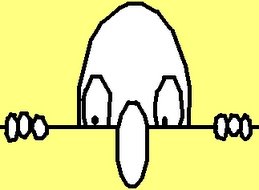In my last posting I followed up on my discovery last summer of what I considered to be an outstanding Civil War Monument in Gloversville, New York, which I later learned is also on public display in three other locations. So you already know that I am always interested in finding new to me monuments like this one. Despite a childhood dalliance with wearing the grey during the Centennial observations, seduced by the cavalier image, my sentiments today are very much with the North and the Union. Nevertheless, a handsome memorial will catch my interest almost regardless of its subject.
The sculptor is identified on the memorial base as the
then-noted F.H.Packer of New York but several articles and a guide book report
that he worked in collaboration with local architect Henry Bacon, Jr, on the
monument as a whole. It consists of a
more than 15 ton granite pedestal and shaft providing base and background to
the two figures. This is not the
only work by Packer to be seen on the streets of Wilmington.The casting was done at Roman Bronze Works in New York which worked with many of the greatest sculptors in America.
The two canteens featured in the memorial bear the markings
of Company H, 40th North Carolina.
According to Stewart Sifakis’
Compendium of the Confederate Armies: North Carolina, this company was also
known as Company H of the North Carolina 3rd Artillery Regiment in
November 1863 and was captained by Calvin Barnes. Much of the 40th/3rd
Artillery was captured at the fall of Fort Fisher on January 15, 1865. The then
surviving remnants were converted to infantry and consolidated with the remnants
of the 2nd Artillery Regiment and other companies. They were
surrendered as part of Joe Johnston’s army at Durham Station, North Carolina on
April 26, 1865 having fought at Fort Anderson, Northeast River, Jackson’s
Mills, and finally at Bentonville.
The National Park Service offers the following account of
the regiment: “40th Regiment Volunteers-3rd Artillery was organized at Bald
Head, Smith's Island, North Carolina, in November, 1863, from heavy artillery
companies formed in 1861 and 1862. Its 1,152 men were from the counties of
Lenoir, Beaufort, Pamlico, Richmond, Robeson, Wayne, Wilson, Edgecombe, Greene,
New Hanover, Bladen, Anson, and Chatham. Attached to the Department of North
Carolina and Southern Virginia, detachments served at Fort Holmes, Fort
Caswell, Fort Campbell, Fort Anderson, and Fort Fisher. In 1865 the unit was
converted to infantry and assigned to Hagood's Brigade. It fought at
Bentonville and surrendered with the Army of Tennessee on April 26. Its
commanders were Colonel John J. Hedrick, Lieutenant Colonel George Tait, and
Major William A. Holland.”
You can also find their published roster at Google Books.
The good news
is that the only apparent visible damage is the broken off bayonet on the standing figure’s musket. Sadly, the bayonet was clearly
there in 1994 based upon the photo at this link to the North Carolina monument’s
online index - http://ncmonuments.ncdcr.gov/Photos.aspx?searchterm=66.

